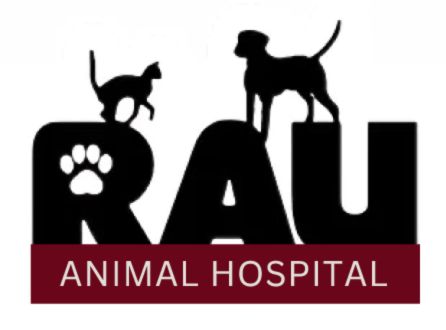As dogs age, their risk of developing certain diseases — including cancer — increases. The leading cause of death in dogs in the United States, roughly a third of all dogs over the age of seven will experience some type of cancer. Keeping a close eye on your canine companion’s health as they age is crucial because, while you can’t diagnose cancer by simply looking at your dog, you can seek prompt veterinary care for any issues that arise.
As veterinarians, we have treated cancer in countless dogs. Though the disease is complicated and presents in many ways, we have recognized several symptoms that often indicate a dog has cancer. Watching for these symptoms and scheduling an appointment with us at the first sign of trouble improves the likelihood of detecting cancer before it can spread. And when we notice and begin treatment for this devastating illness early, the prognosis is generally much better. This blog post will share a few of the most common symptoms that could indicate your dog has cancer.
1. Sores That Won’t Heal
If your pet has an open wound that refuses to heal, it could signify cancer. However, even if it’s not cancer, it could be a symptom of another potentially serious issue, like an infection.
2. Lumps, Bumps, or Swellings
You would probably schedule an appointment with your doctor right away if you noticed an unusual growth on your body. It only makes sense to do the same for your canine companion. Lumps, bumps, and swellings that get bigger or refuse to go away are common indicators of cancer, and you should never ignore them.
3. Decreased Appetite
Your dog’s appetite may decrease slightly due to the natural aging process. This is completely normal. But if their appetite diminishes significantly or they start refusing their favorite treats, a trip to the veterinarian’s office is in order.
4. Sudden Weight Loss
If your dog’s weight is dropping and they are not on a diet, an underlying illness is the most likely cause. Pets with cancer often lose significant amounts of weight in very little time. Cancer could be to blame if your dog is suddenly slimming down without a known reason.
5. Trouble Eating or Swallowing
When your dog wants to eat but can’t due to problems chewing or swallowing, they could have cancer in their mouth or throat, though dental issues can also cause difficulty eating. Bringing them in for a comprehensive examination is the only way to know for sure what’s causing the problem.
6. Discharge or Bleeding From Any Orifice
Bleeding or any other type of discharge from the nostrils, ears, mouth, anus, or any other orifice (except for small amounts of bleeding in females during heat) is an emergency that requires immediate veterinary attention. This symptom has numerous causes, including cancer, which a veterinarian must address immediately.
7. Foul Odor
If your canine companion smells bad, no matter how many times you bathe them, they could have a nose, mouth, or anus tumor. Cancerous tumors often give off an unpleasant aroma, so schedule an appointment if your dog stinks, and you aren’t sure why.
8. Exercise Intolerance
Your dog will likely slow down and become less active as they get older. However, exercise intolerance and lethargy are often the earliest signs of illness in younger dogs. Even if your dog is older, sudden changes in energy levels and loss of interest in once-loved activities warrant a veterinary visit.
9. Straining to Urinate or Defecate
Seek immediate veterinary care if your dog strains to urinate or defecate. These problems are serious and have numerous potential causes. Whether it’s cancer or something else, acting quickly is crucial.
10. Difficulty Breathing
A mass pressing on any part of the respiratory system could make it difficult for your canine companion to breathe. Many cancers also spread to the lungs when advanced. Wheezing, coughing, choking, and other signs of respiratory distress are emergencies.
11. Lameness or Stiffness
Arthritis is the most common cause of stiffness and lameness in older dogs. However, cancer can cause this symptom, too. If your dog is having more trouble getting around than usual, they could have a tumor pressing on a nerve or suffer from bone or muscle cancer.
12. Evidence of Pain
Cancer is a painful disease, and it can make your beloved companion downright miserable. If you have any reason to think your dog is in pain, seek veterinary care right away. Even if cancer isn’t causing their pain, we can provide solutions to help keep them comfortable.
Signs of pain in dogs include:
- Tight, twitching muscles
- Shaking or trembling
- Lethargy
- Crying out in pain
- Restlessness
- Excessive licking or chewing of a specific area
- Avoiding touch
- Hiding
- Behavior changes, especially aggression
- Reluctance to jump or use stairs
- Difficulty lying down and getting up
What to Do If You Think Your Dog Has Cancer
Please contact us right away if your dog has any of the symptoms above or you have any other reason to think they could be suffering from a serious illness. We will perform a thorough hands-on examination and may recommend additional diagnostic testing to determine what’s going on with your beloved companion. Once we have diagnosed the problem, we’ll provide treatment options and help you determine how to best help your dog. Call now to schedule an appointment.

